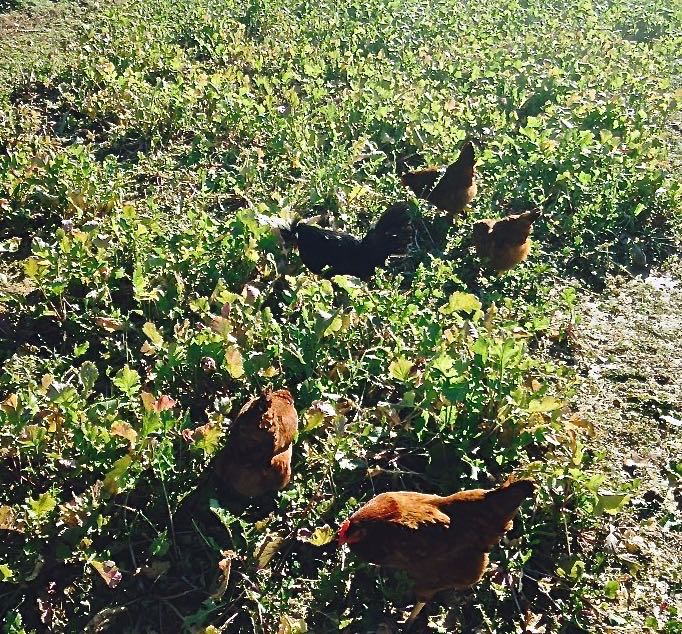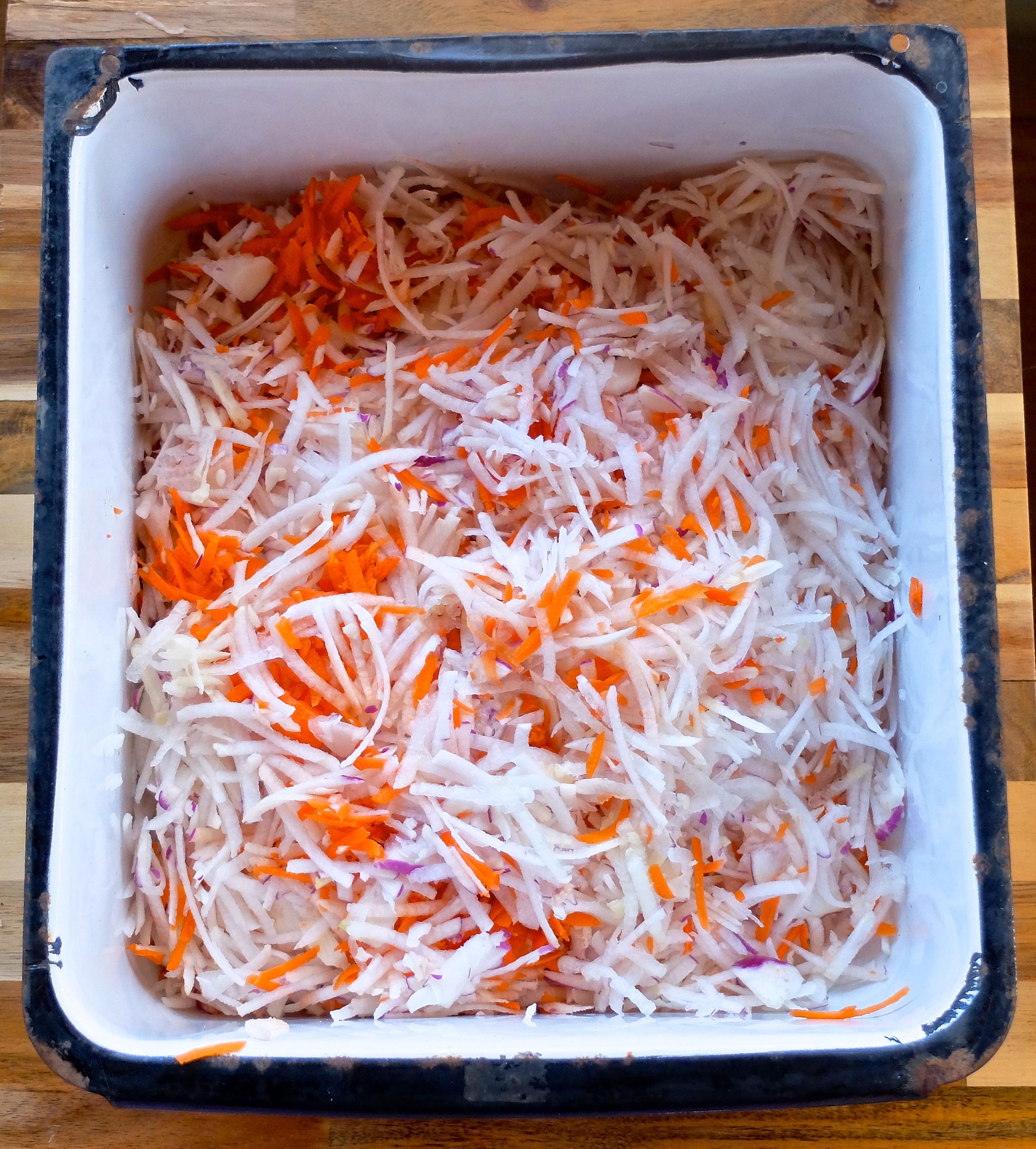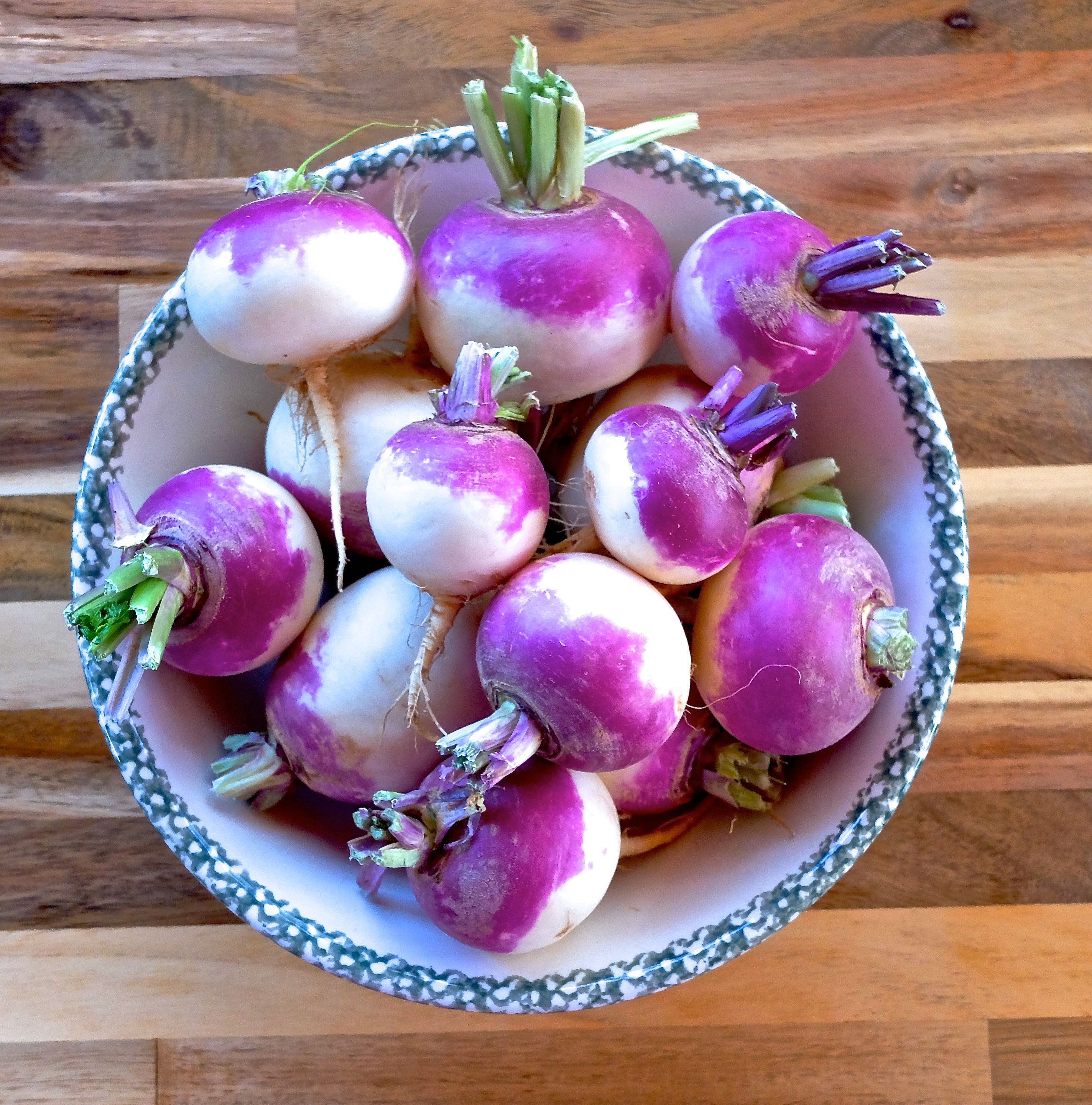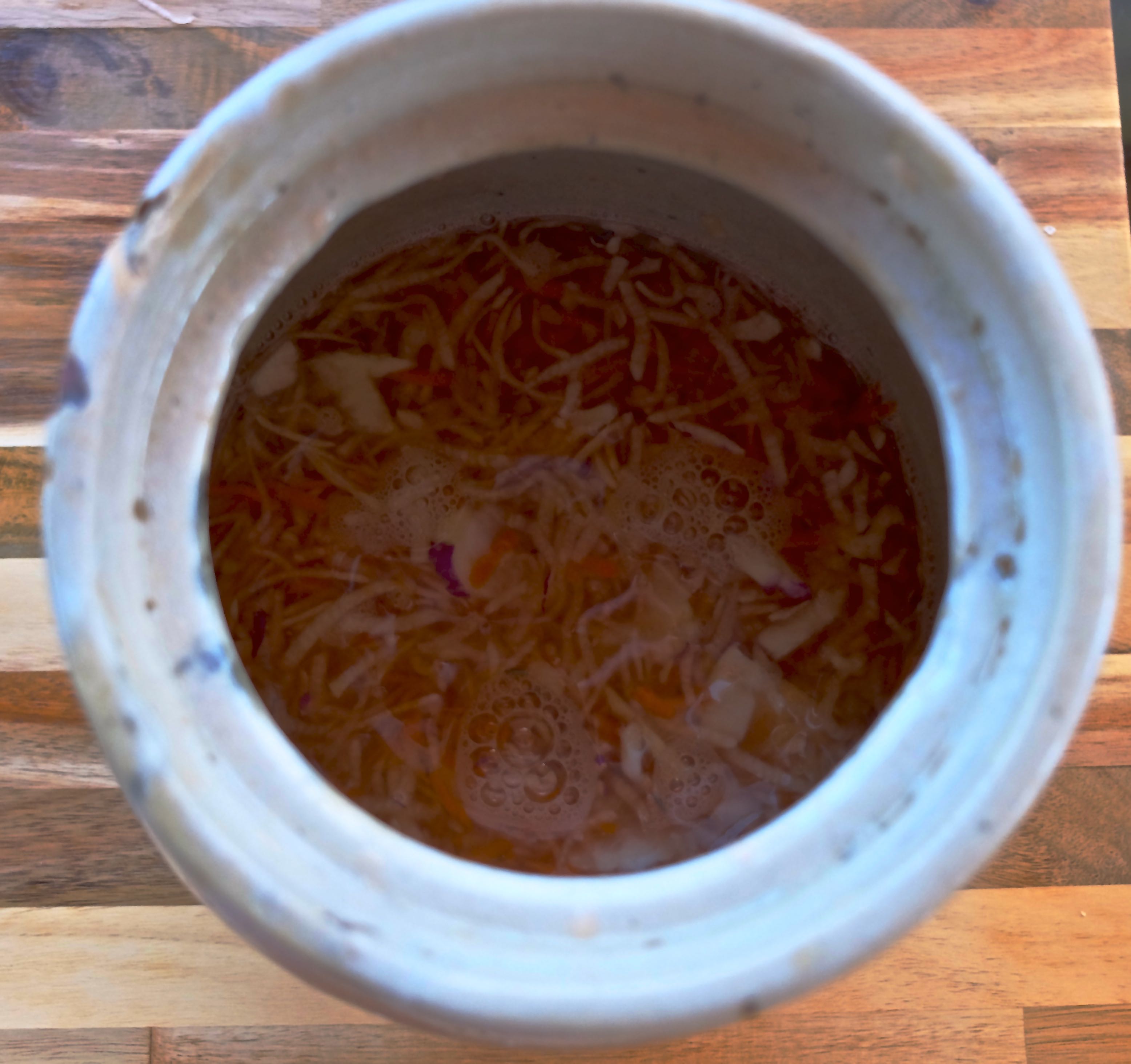Lactobacillus Bacteria converts sugar into lactic acid. This lactic acid prohibits harmful bacteria from growing in places like your gut. Did you know that just about 80% of your immune system resides in your gut?
Winter is upon us and the fall’s garden harvest will come to the rescue. When it comes to your immune system, nothing beats a batch of ferment to kick a cold to the curb. All the while, cultures have been “culturing” since the begining of time. “For our continued well-being- as individuals, communities, and as a species- and our continued ability to adapt to change, we must revive and perpetuate the essential cultural practice of fermentation,” writes Sandor Katz in his James Beard Award-Winning book, The Art Of Fermentation. Katz will be speaking at this weekend’s Tennessee Local Food Summit. Be on the lookout for my coverage of the event in an upcoming 12th and Broad – Shake The Hand That Fed You edition.
This week I’ve been making kraut and kimchi using produce from the garden. If you’ve been keeping up with my blog over the past months, you know that Alisa Huntsman and I have been working on a book project. Her story of Gratitude and Tomatillo Jam is live over at “Will Garden For Cake” today. I’ve learned a great deal from her about fermentation. Why, just a few years ago, I would have been petrified to ferment. Yet, I took the plunge into the world of wild fermentation last year and can’t recall having a cold ever since…knock on wood. It’s super easy, and once you get the basics down, you can pretty much ferment any vegetable or fruit your heart desires.
Items You Will Need:
Non-Iodized Salt
Distilled Water
Two quart-sized resealable storage bags
Shredder/Knife
Medium-sized non-reactive crock or jar and pan
Produce

Chickens love turnips, and they fertilize while munching on these cruciferous taproots. This is one way to close the loop, for sure.

Using a box grater or food processor, shred the vegetables and place in a non-reactive pan. I used carrots and turnips for this batch.
The salt is used to break down the vegetable’s cellular walls, creating liquid. This is when other spices and flavors can be added. I added caraway seeds to this batch.
Depending upon the vegetable, you will need to work the salt into the vegetables until they start to give up liquid. Something like cabbage or kale will take longer than radish or turnips. After 5-10 minutes, there should be a fair amount of liquid. If not, add a small amount of salt. As you continue massaging the vegetables, taste along the way. You can always add more salt as needed. If you oversalt, the remedy is to add more vegetables.
The ferment will not spoil or cause illness, as long as it does not come in contact with air. Make sure that there are about 1-2 inches of liquid on top. If there is not, fill in with distilled water. Note, the water must be distilled. Chlorine and other trace elements found in tap or even filtered water can kill the good bacteria fermentation offers.
Some ferment crocks come with a weight, but distilled water and storage bags can do the trick. Fill a storage bag with about 2 cups of distilled water. Double bag it to prevent leakage and place on top of the ferment. This will weigh the vegetables down, assuring a 1-2 inch level of liquid on top. Ever so often, check to make sure there is enough liquid. If a little bit of white mold forms on top, don’t worry. Simply skim it off the top. Red mold is the bad stuff. If red mold is present, dispose of the entire batch and start a new one. In 1-2 weeks, your ferment should be ready to enjoy. Though, the longer the ferment the better. Some would say a 2 week old batch is nothing more than cole slaw. I have heard of ferments “cooking” for a year or more. Ever heard of the phrase “bottom of the barrel?” Long ago, people would preserve their harvest in large wooden barrels. The first couple of servings would still be crisp and vibrant. They would survive harsh winters with this probiotic-rich food. Come early spring, they were left with mushy, drab servings left at the bottom of the barrel.
I’ve recently acquired a new kitchen gadget from a start-up company called Kraut Source. I first learned of them from the fine folks at The Brinery in Ann Arbor, Michigan. Inspired by their kimchi recipes, I’ve tried my hand at making my first batch out of turnips, bok choy, carrots, green onions, cayenne peppers and garlic. The basic technique is similar, with the addition of fish sauce. Although, I recommend a pair of rubber gloves. Those peppers will burn your skin, if you’re not careful.
If you prefer to start out with a small batch of ferment, I highly recommend Kraut Source. Click here for a video about how simple it is to use.
It’s important to store ferment properly. Do not can this product, because heat will destroy its healing properties. Storing in jars in a cool, dark environment is fine. Just make sure to loosen the lids, so as not to cause a stinky explosion of sorts. Remind me to tell you the story of that one time I “stored” a batch of cider. I’ve been known to keep a crock of ferment going on the kitchen counter and just added to it as I went. However, most people prefer to refrigerate. As long as there is liquid left on top, the refrigerated batch will remain healthful for about a year.
Lactobacillus Bacteria converts sugar into lactic acid. This lactic acid prohibits harmful bacteria from growing in places like your gut. Did you know that just about 80% of your immune system resides in your gut?
Winter is upon us and the fall garden’s harvest may just come to the rescue. When it comes to your immune system, nothing beats a batch of ferment to kick a cold to the curb. Since the beginning of time, cultures have been “culturing”. “For our continued well-being- as individuals, communities, and as a species- and our continued ability to adapt to change, we must revive and perpetuate the essential cultural practice of fermentation,” writes Sandor Katz in his James Beard Award Winning book, The Art Of Fermentation. Katz will be speaking at this weekend’s Tennessee Local Food Summit. Be on the lookout for my coverage of the event in an upcoming 12th and Broad – Shake The Hand That Fed Youedition.
This week I’ve been making kraut and kimchi using produce from the garden. If you’ve been keeping up with my blog over the past months, you know that Alisa Huntsman and I have been working on a book project. Her story of Gratitude and Tomatillo Jam is live over at Will Garden For Cake today. I’ve learned a great deal from her about fermentation. Why, just a few years ago, I would have been petrified to ferment. Yet, I took the plunge into the world of wild fermentation last year and can’t recall having a cold ever since…knock on wood. It’s super easy, and once you get the basics down, you can pretty much ferment any vegetable or fruit your heart desires.
Items You Will Need:
Non-Iodized Salt
Distilled Water
Two quart-sized resealable storage bags
Shredder/Knife
Medium-sized non-reactive crock or jar
Produce





